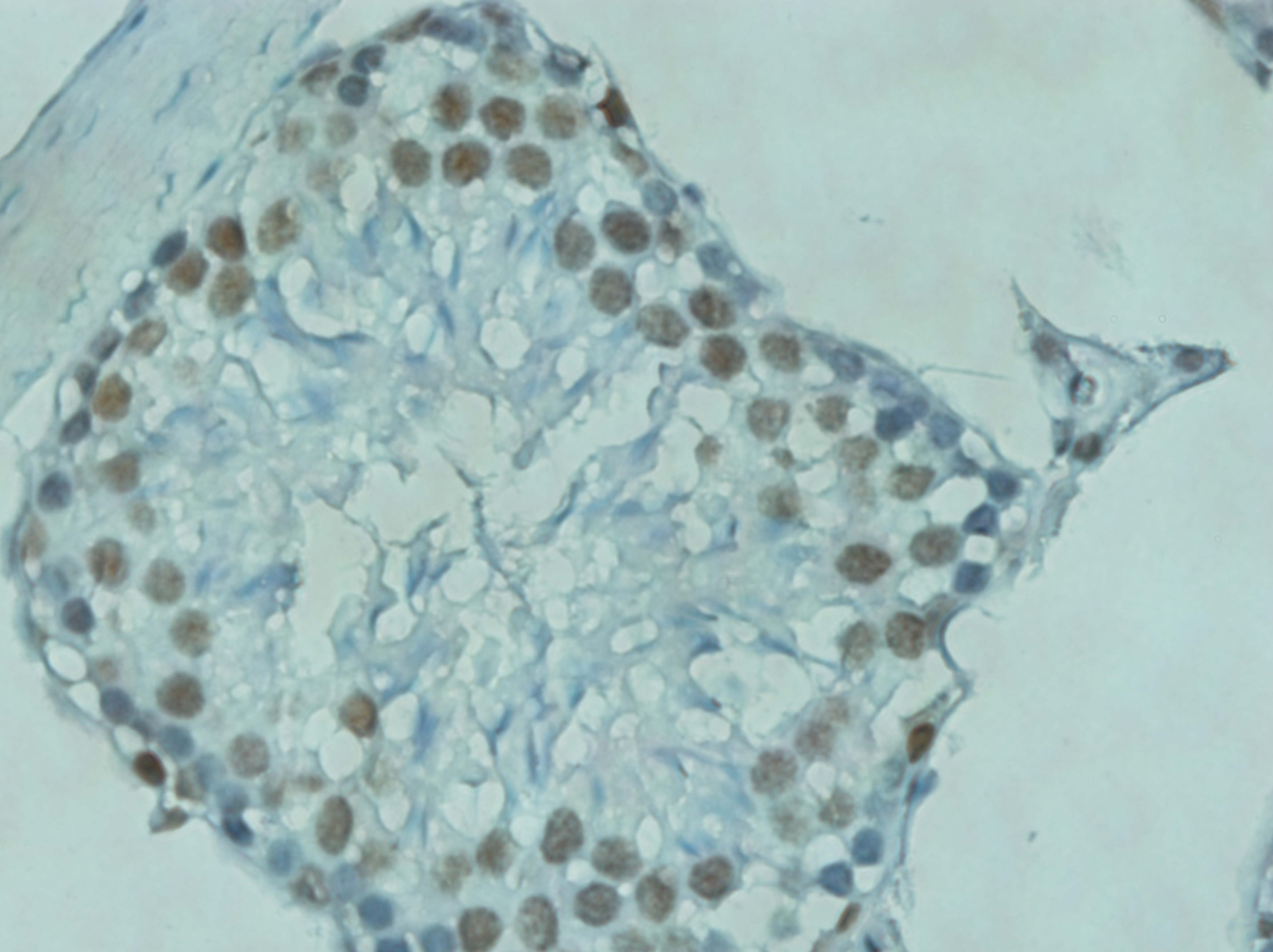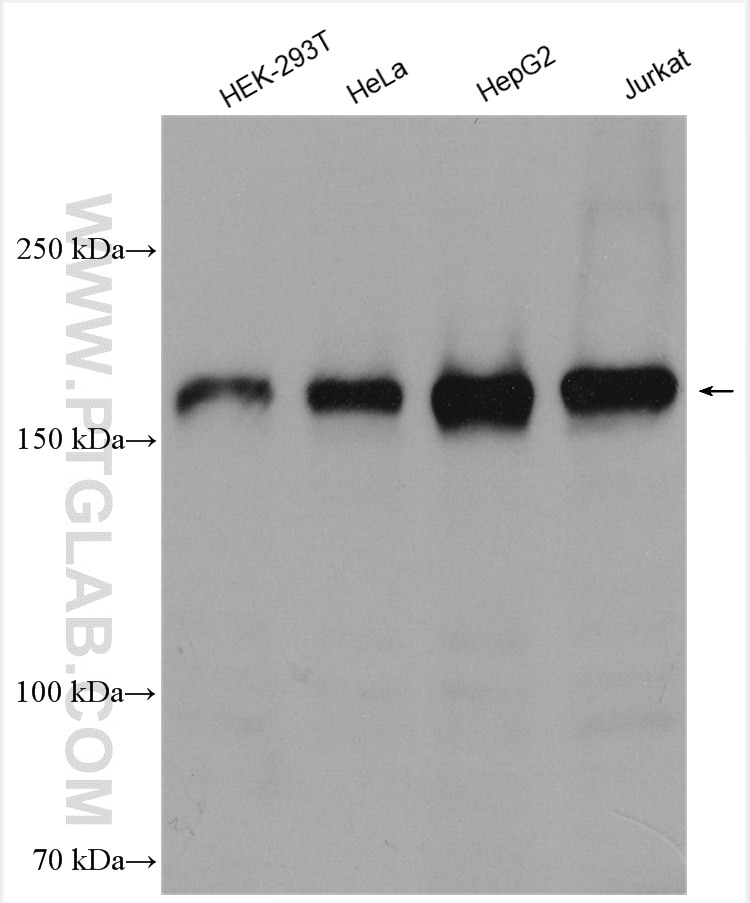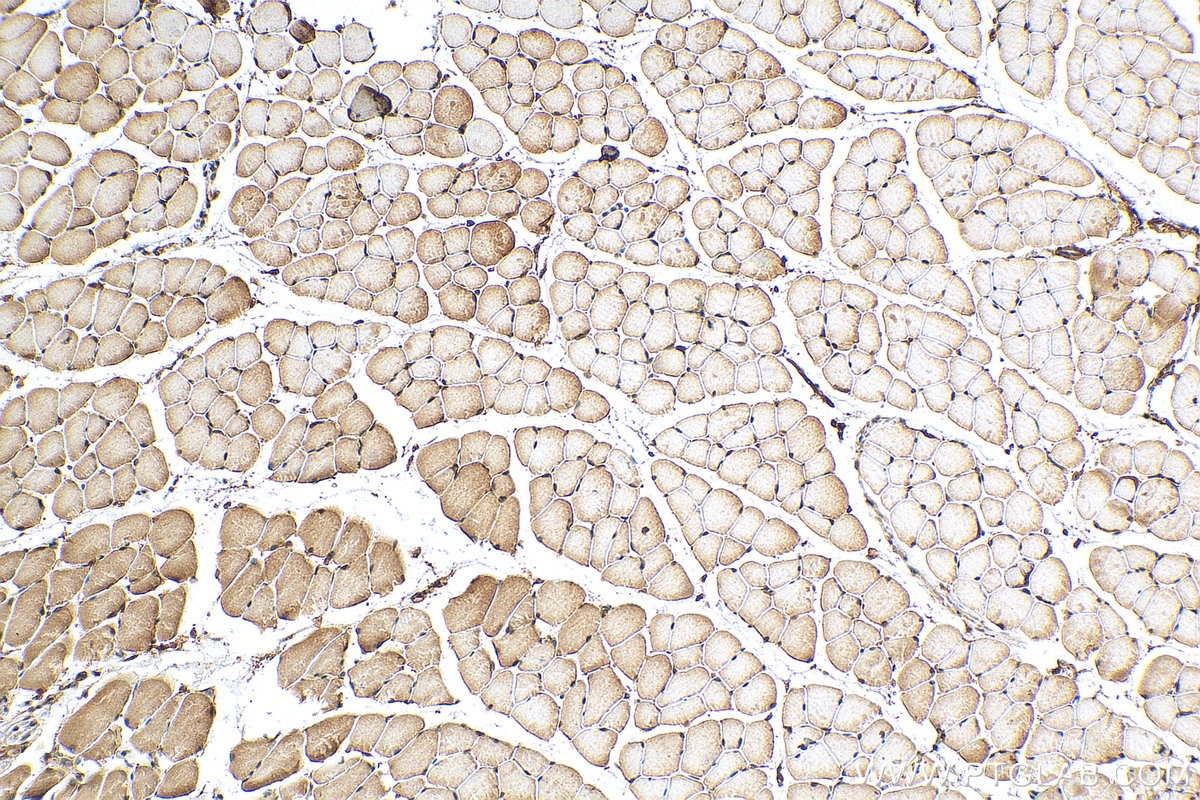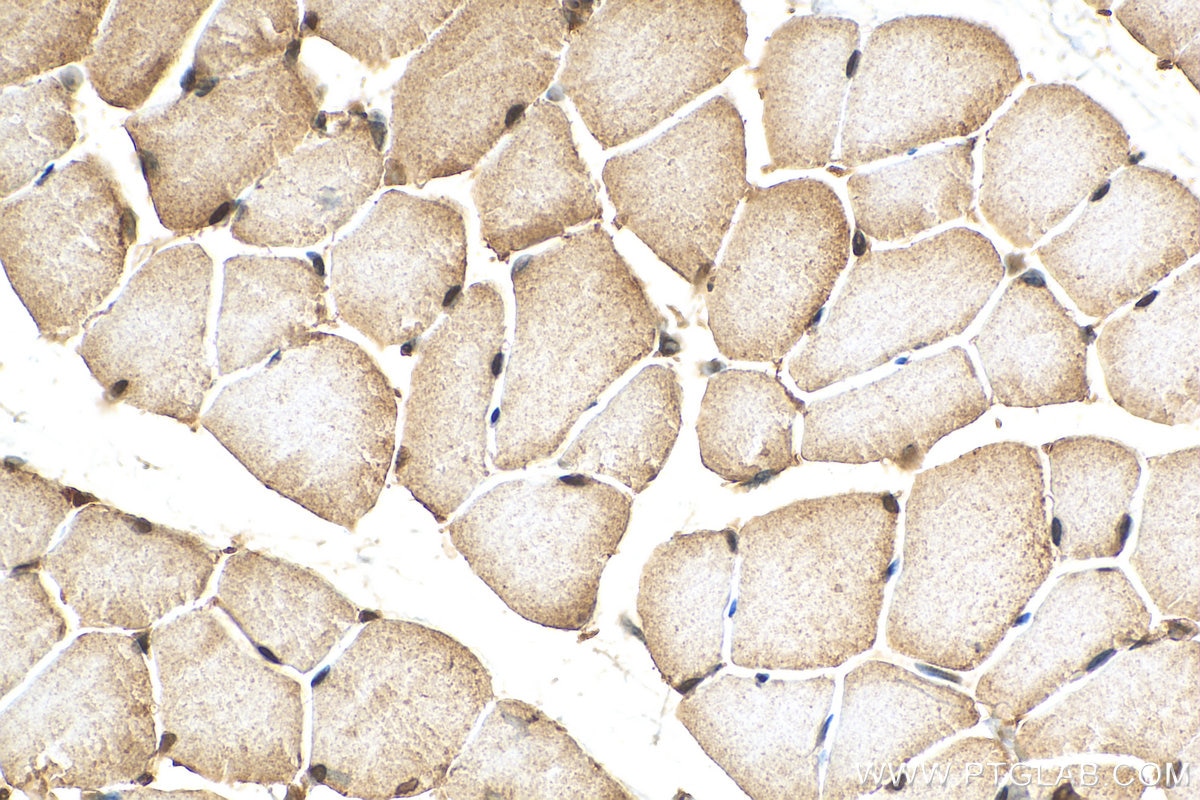- Featured Product
- KD/KO Validated
WAPL; WAPAL Polyklonaler Antikörper
WAPL; WAPAL Polyklonal Antikörper für IHC, WB, ELISA
Wirt / Isotyp
Kaninchen / IgG
Getestete Reaktivität
human, Maus und mehr (1)
Anwendung
WB, IHC, IF, ChIP, ELISA
Konjugation
Unkonjugiert
Kat-Nr. : 16370-1-AP
Synonyme
Galerie der Validierungsdaten
Geprüfte Anwendungen
| Erfolgreiche Detektion in WB | HEK-293T-Zellen, HeLa-Zellen, HepG2-Zellen, Jurkat-Zellen |
| Erfolgreiche Detektion in IHC | Maus-Skelettmuskelgewebe Hinweis: Antigendemaskierung mit TE-Puffer pH 9,0 empfohlen. (*) Wahlweise kann die Antigendemaskierung auch mit Citratpuffer pH 6,0 erfolgen. |
Empfohlene Verdünnung
| Anwendung | Verdünnung |
|---|---|
| Western Blot (WB) | WB : 1:500-1:2000 |
| Immunhistochemie (IHC) | IHC : 1:50-1:500 |
| It is recommended that this reagent should be titrated in each testing system to obtain optimal results. | |
| Sample-dependent, check data in validation data gallery | |
Veröffentlichte Anwendungen
| KD/KO | See 1 publications below |
| WB | See 9 publications below |
| IF | See 2 publications below |
| ChIP | See 2 publications below |
Produktinformation
16370-1-AP bindet in WB, IHC, IF, ChIP, ELISA WAPL; WAPAL und zeigt Reaktivität mit human, Maus
| Getestete Reaktivität | human, Maus |
| In Publikationen genannte Reaktivität | human, Maus, Ratte |
| Wirt / Isotyp | Kaninchen / IgG |
| Klonalität | Polyklonal |
| Typ | Antikörper |
| Immunogen | WAPL; WAPAL fusion protein Ag9280 |
| Vollständiger Name | wings apart-like homolog (Drosophila) |
| Berechnetes Molekulargewicht | 142 kDa |
| Beobachtetes Molekulargewicht | 160-180 kDa |
| GenBank-Zugangsnummer | BC017393 |
| Gene symbol | WAPAL |
| Gene ID (NCBI) | 23063 |
| Konjugation | Unkonjugiert |
| Form | Liquid |
| Reinigungsmethode | Antigen-Affinitätsreinigung |
| Lagerungspuffer | PBS mit 0.02% Natriumazid und 50% Glycerin pH 7.3. |
| Lagerungsbedingungen | Bei -20°C lagern. Nach dem Versand ein Jahr lang stabil Aliquotieren ist bei -20oC Lagerung nicht notwendig. 20ul Größen enthalten 0,1% BSA. |
Hintergrundinformationen
The wings apart-like (WAPL, or WAPAL) protein was originally identified as a gene product that potentially regulates heterochromatin organization in Drosophila melanogaster. Human WAPL is a cohesin-binding protein that promotes sister-chromatid resolution in mitotic prophase. Overexpression of WAPL disturbs mitosis and cytokinesis, and contributes to tumor progression by induction of chromosomal instability. WAPAL has a predicted molecular weight of 140 kDa, however, as a result of its extensive phosphorylation it separates on a SDS gel as a band of approximately 160-180 kDa.
Protokolle
| Produktspezifische Protokolle | |
|---|---|
| WB protocol for WAPL; WAPAL antibody 16370-1-AP | Protokoll herunterladen |
| IHC protocol for WAPL; WAPAL antibody 16370-1-AP | Protokoll herunterladen |
| Standard-Protokolle | |
|---|---|
| Klicken Sie hier, um unsere Standardprotokolle anzuzeigen |
Publikationen
| Species | Application | Title |
|---|---|---|
Nat Genet WAPL maintains a cohesin loading cycle to preserve cell-type-specific distal gene regulation.
| ||
Sci Adv RNA polymerase II is required for spatial chromatin reorganization following exit from mitosis. | ||
J Clin Invest Allogeneic T cell responses are regulated by a specific miRNA-mRNA network. | ||
Cell Rep Cohesin Removal along the Chromosome Arms during the First Meiotic Division Depends on a NEK1-PP1γ-WAPL Axis in the Mouse. |
Rezensionen
The reviews below have been submitted by verified Proteintech customers who received an incentive forproviding their feedback.
FH Zhenmin (Verified Customer) (12-05-2019) | This antibody is very specific and works very well with immunohistochemical staining for formalin fixed and paraffin embedded tissue.
 |




